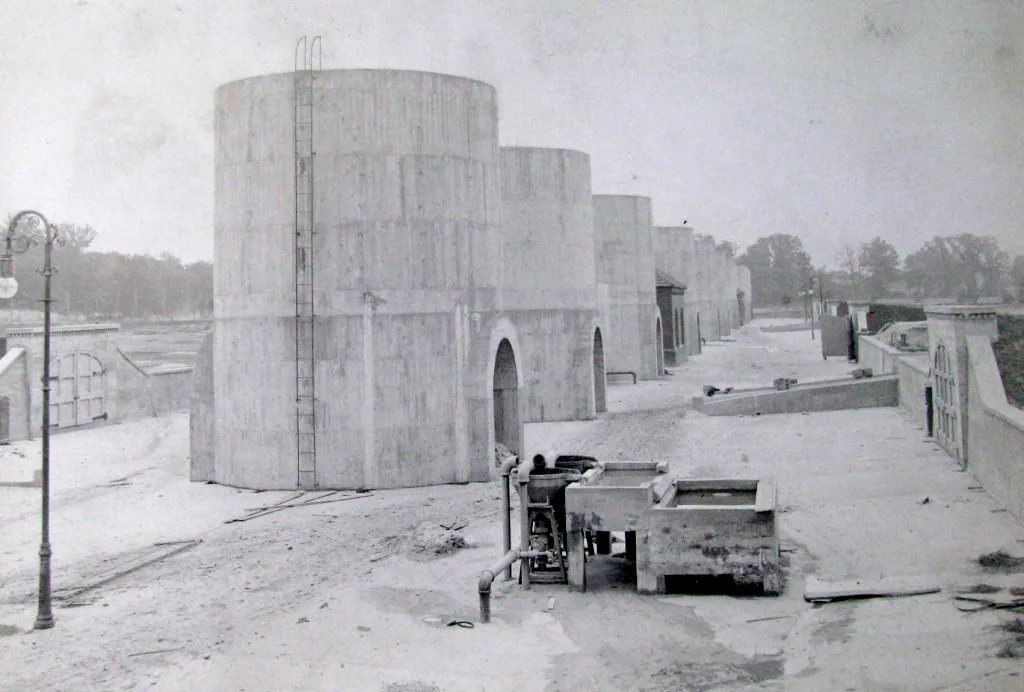- June 30, 2025
- By Maggie Haslam
For decades, abandoned concrete silos cresting the horizon like post-apocalyptic chess pieces presented an eerie curiosity for drivers on one of the busiest north-south arteries in and out of Washington, D.C.
The MacMillan Sand Filtration Site was once an engineering marvel that supplied clean drinking water to District residents—including the president and first lady—for close to a century. Now, an inventive adaptive reuse project led in part by University of Maryland architecture faculty and alums highlights MacMillan’s history in D.C.’s largest new park since 1903; complementary housing, retail and office space will be later additions to the site.
The master plan and recreation center at Reservoir District received the 2025 Regional & Urban Design Award from the American Institute of Architects in June, recognizing its commitment to sustainability, inclusivity and resilience. The project was conceived and developed over eight years by UMD Professor Matthew Bell, Christian Calleri M.Arch ’01 and their colleagues from Perkins Eastman, in collaboration with Nelson Byrd Woltz Landscape Architects. The baton was then passed to Tom Jester M.Arch ’99 of Quinn Evans, whose team served as the architect of record.
“This was an opportunity to bring something special to this part of D.C.,” said Bell, who served as the project’s principal in charge. “It’s a unique site and a wonderful opportunity to reactivate a site for the community in a way that also celebrates a forgotten part of its history.”

Opened in 1902, the MacMillan project helped to conquer waterborne illnesses plaguing D.C. through a nontoxic, slow sand filtration system. Water drawn from the Potomac River flowed through aqueducts to the McMillan Reservoir, where it was pumped into catacomb-like cells below grade; there it seeped through four feet of bacteria and muck-scrubbing sand before routing to faucets across the city. Fresh sand was stored in cylindrical silos and distributed through thousands of manholes nestled on the grassy field above. Landscaping, a public promenade and an adjoining park were later designed by Frederick Law Olmsted Jr. to serve the many residents who flocked to MacMillan, and to strategically keep them off the field (and away from the occasionally open manhole).
The 25-acre site between North Capitol Street and First Street NE was sold by the federal government to the city in 1987. It remained unused until city officials tapped a development team, including Perkins Eastman, to design a vision for its future in 2007. Extensive research and community outreach, said Bell, revealed the need to balance development, public open space and preservation.
“The people who wanted this project most were the longtime residents,” he said. “They sought the same great new public spaces and amenities popping up all over D.C. Our challenge was to address those needs while also demonstrating that we understood the characteristics of the historic landmark, an important key to creating compatibility.”
Quinn Evans, which oversaw the construction and approval of the project, ensured the site’s original architecture was preserved and stabilized for its new public use. Off the park’s main entrance off North Capitol Street, a tiered, sunlit plaza carves into landscape to reveal its historic underground, where water was filtered a century ago; portions of the catacombs offer shaded spots to gather. Above, a magnificent green lawn extends to the west, flanked by the preserved Olmsted Walk and relocated historic fountain.
The new centerpiece is the light-filled recreation center, nestled on the edge of the plaza, that offers indoor/outdoor community spaces. A row of restored silos and remains on the south side of the site, preserving the iconic view for drivers and pedestrians along North Capitol Street.
Phase One, which included the recreation center and green space, opened last summer. The second phase, which will bring a grocery store, retail, housing and medical offices to the remaining 17 acres, will be constructed over the next 10 years.
Depending on the time of day or year, said Jester, visitors encounter different experiences, from quiet, early morning walks to the cacophony of midday squeals at the splash park in August.
“It’s a labor of love, really, to be involved in something so unique that created this community asset,” Jester said. “It’s why we get up in the morning to go to work. And it was a privilege to get to complete this project and make sure that everyone who worked on it was proud of it.”
